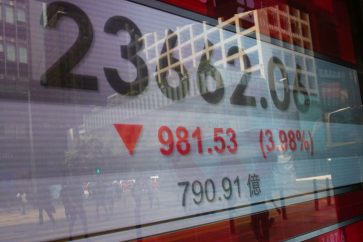Using the iShares S&P/TSX 60 Index ETF as a proxy, the Canadian stock market declined up to 15% from peak to trough this year. A market correction of at least 20% indicates a bear market. Even though the Canadian stock market isn’t yet in a bear market, many investors worry that it will follow the 20% decline of the American stock market.
Fisher Investments Canada states that since 1929, the S&P 500 has seen 13 bear markets, with an average fall of 40% and an average duration of more than 21 months. Because of their interconnected economies, the Canadian and American stock markets frequently move in lockstep. The bigger proportion of the energy sector and the smaller size of the technology sector in the Canadian stock market this time around have made it more resilient.
Due to the pandemic’s increased money supply, stocks recovered quickly from the market crash that occurred in March 2020 due to the pandemic. Many tech stocks had inflated valuations, with specific prices based on price to sales being cited by pundits at the time, even if it wasn’t always evident. Some tech stocks were losing money and showing no earnings. The stock market rises when capital is abundant.
The opposite occurs due to the current tightening of the money supply. Mainly, stock price valuations have fallen. The most significant falls would be seen in stocks with low or no earnings or with the highest valuations. For instance, the sky-high prices of tech companies crashed to earth.
The ninth month of the bear market for the American stock market has just begun. We still have at least a year left if history is any indication and this bear market continues for at least another 21 months.
No single technical or fundamental indication can forecast the bottom of a bear market. Investors would do better to refrain from trying to predict when the bear market will bottom and instead concentrate on making long-term investments in fantastic companies. That would also make you less anxious.
Remember that you can invest for higher long-term profits during market crashes if you take advantage of the chance to purchase inexpensive stocks. Simply continue to routinely invest any extra money in high-quality stocks.
Quality stocks are getting cheap
You can focus on reputable stocks like Fortis (TSX:FTS) if you’re incredibly risk-averse. As a result of high inflation and rising interest rates, the regulated utility’s valuation has decreased and is now more appealing over the long run. As one of the best dividend-growth stocks on the TSX, it has a relatively predictable business model. Specifically, this is the 49th consecutive year it has increased its dividend.
It offers a great yield of 4.3% at a price of $52.56 per share. Considering that the inflation rate in August was 7% over the same month last year, this might not seem like much. Our central bank, however, is working to reduce the high inflation rate by raising interest rates. So, eventually, inflation will rise from 1% to 3%. Fortis stock should trade at higher levels by that point, and its current yield would be pretty respectable.
The consensus analyst price estimate for the next 12 months is $61.32 per share, representing a 16.7% potential near-term price increase on top of the 4.3% dividend yield.



 By:
By:





